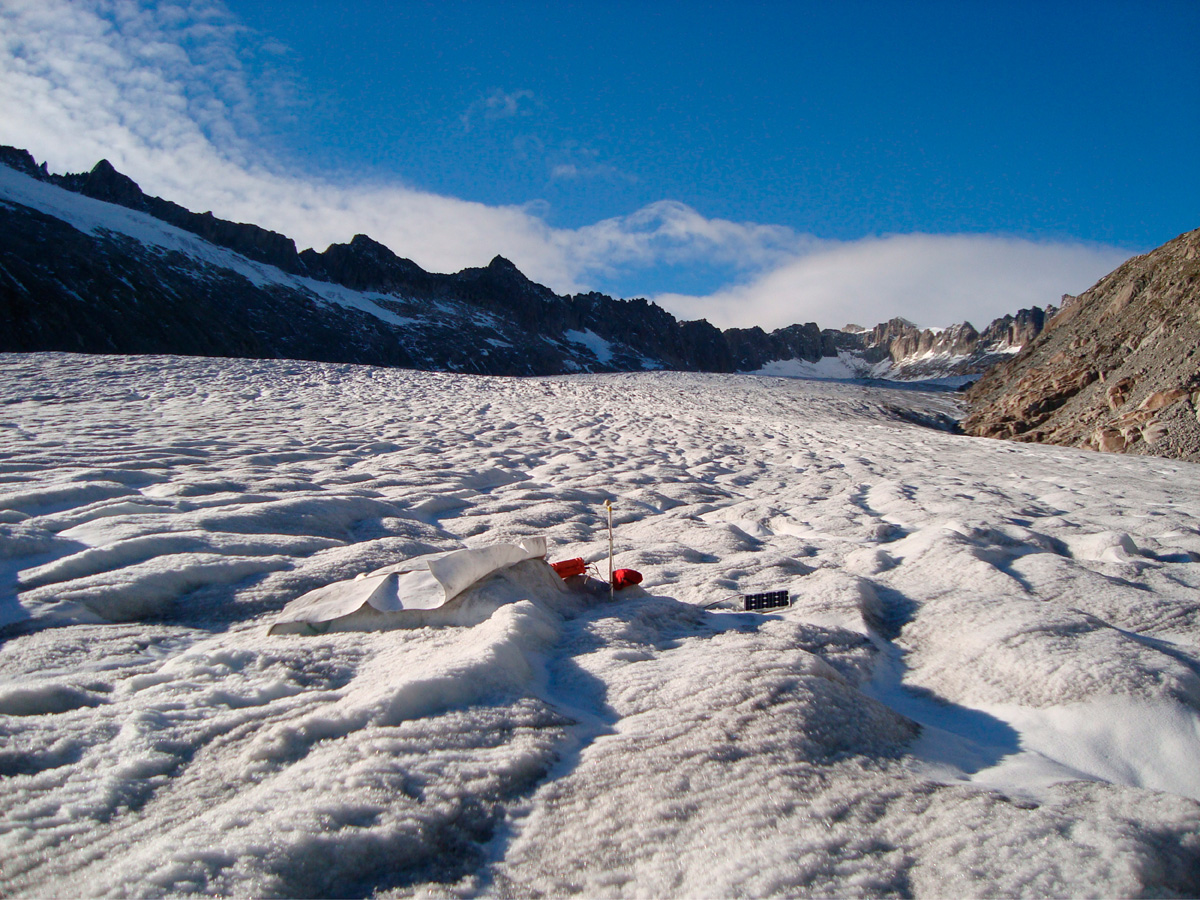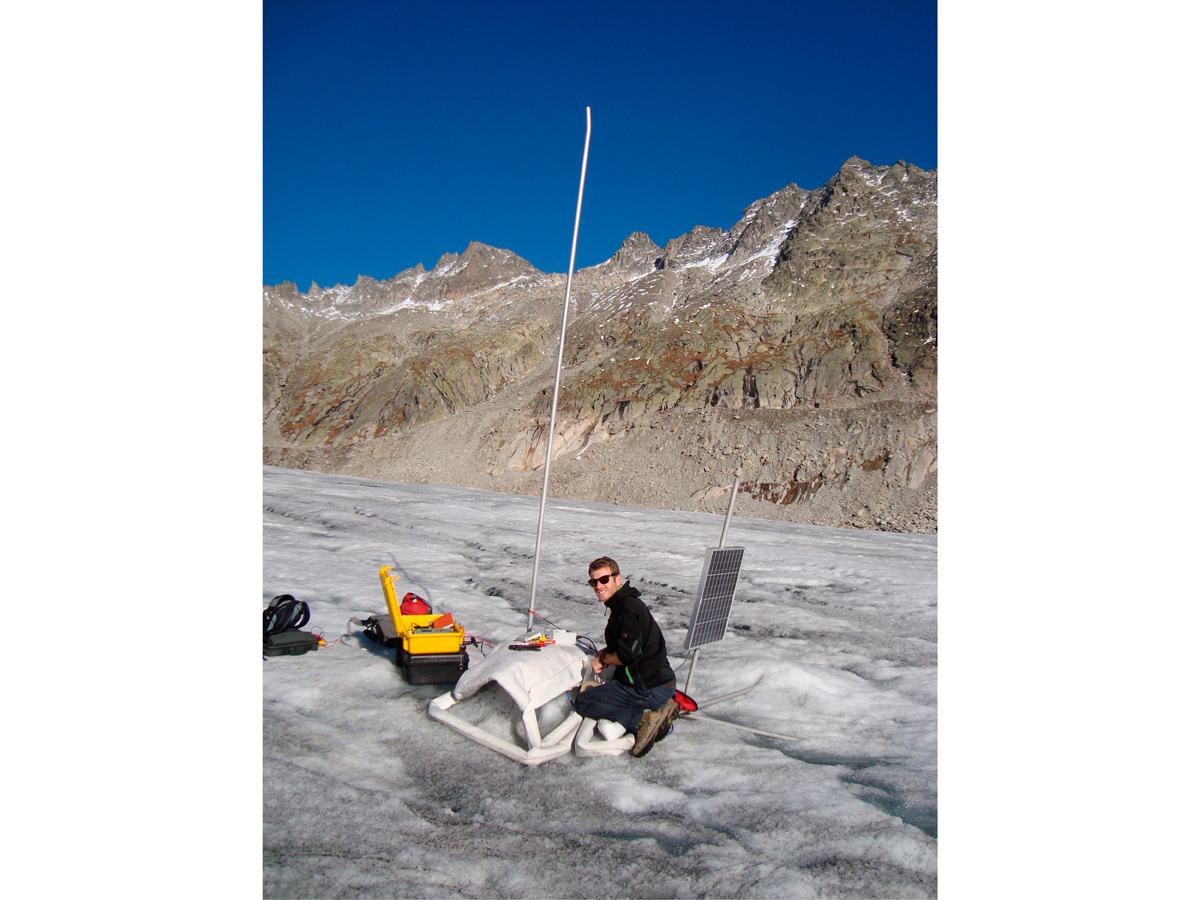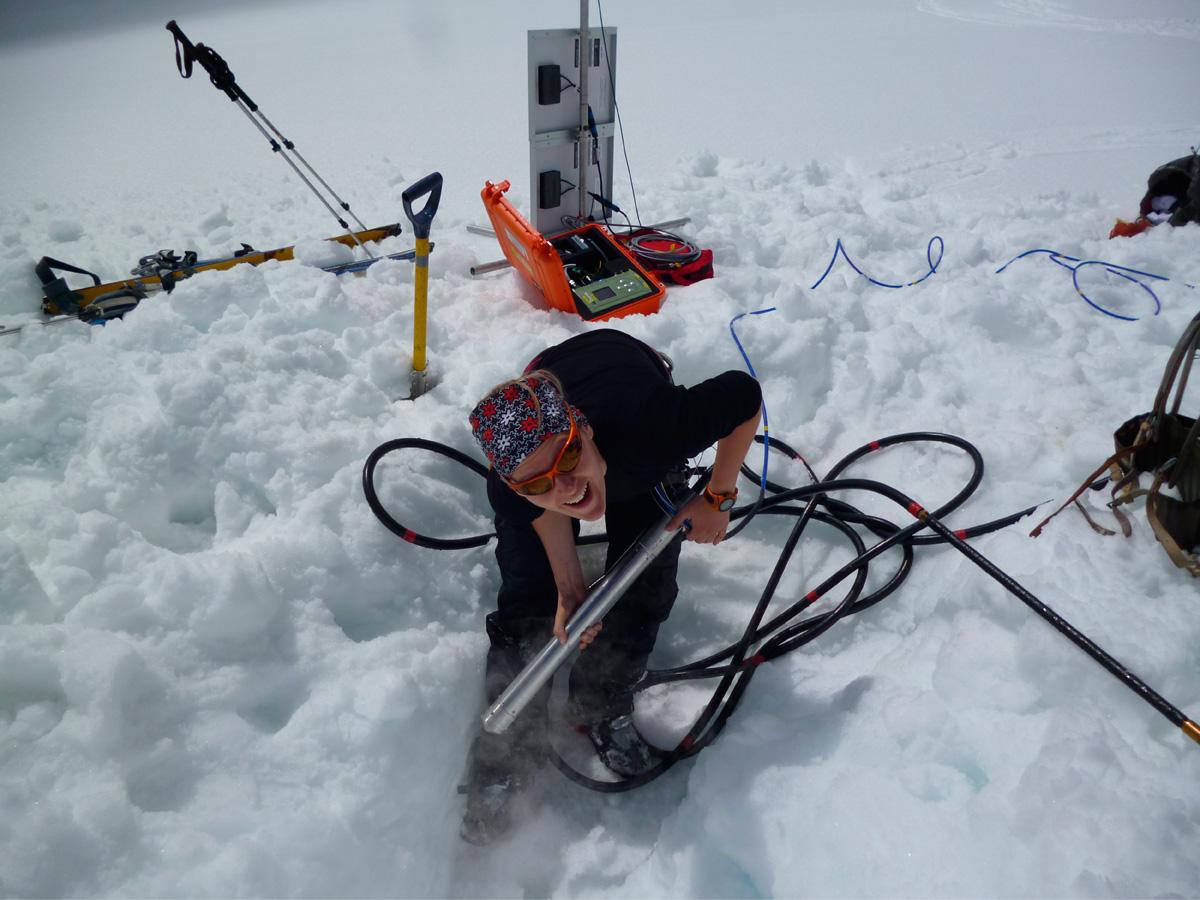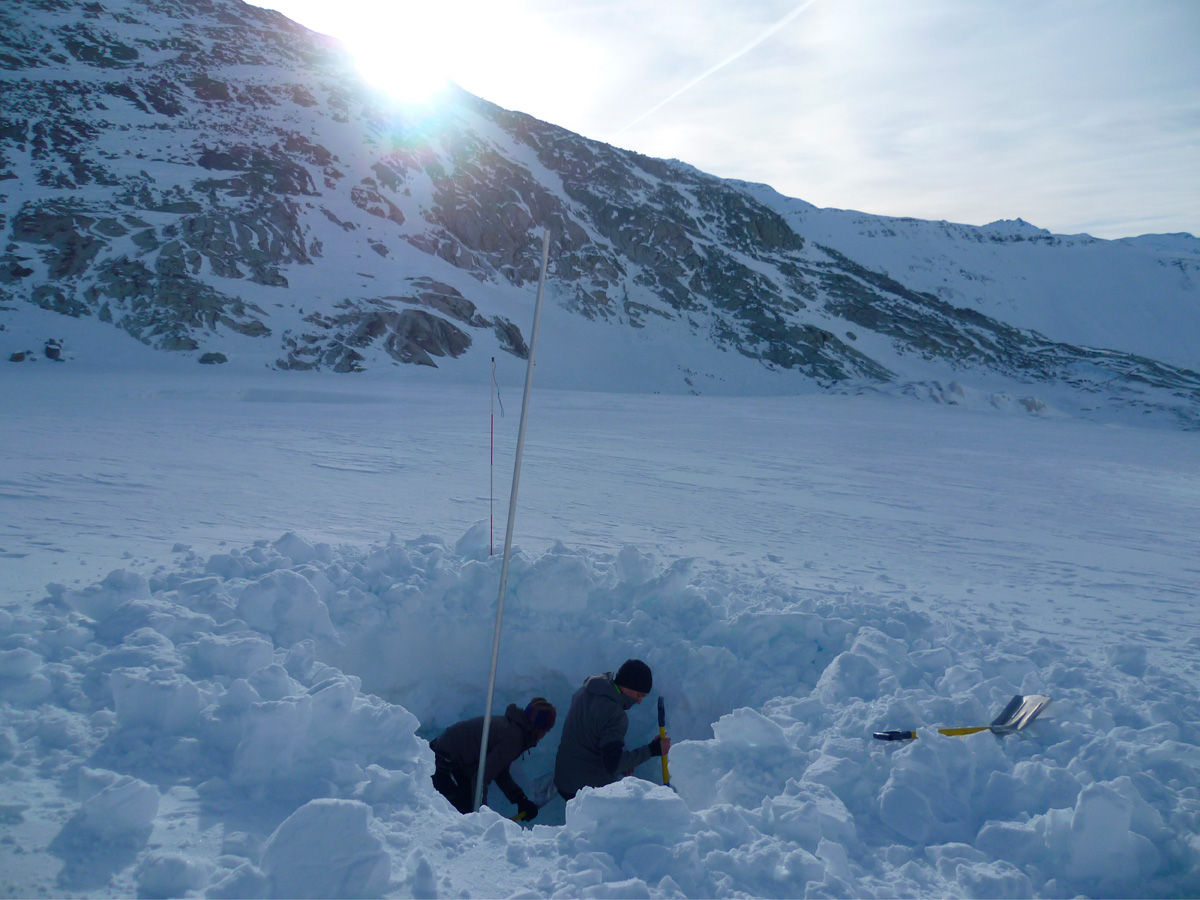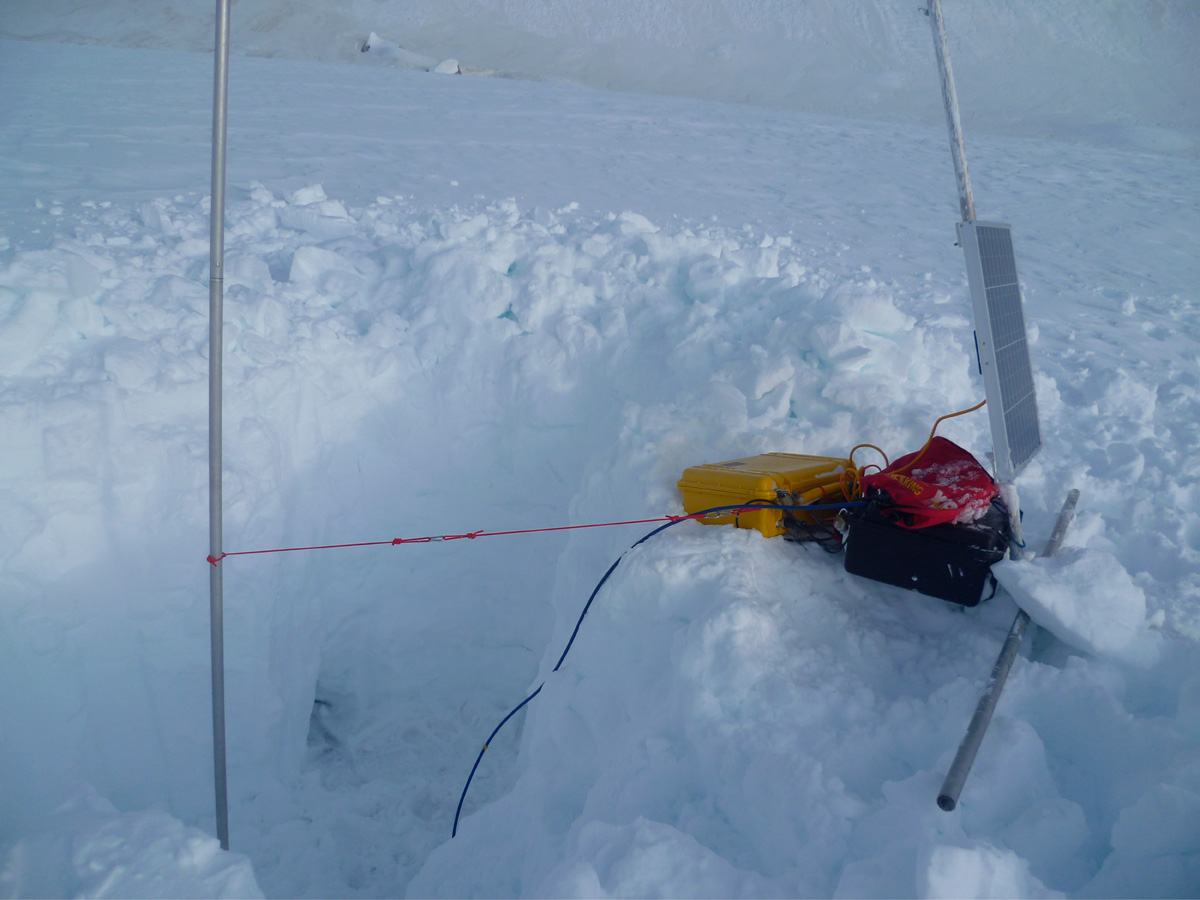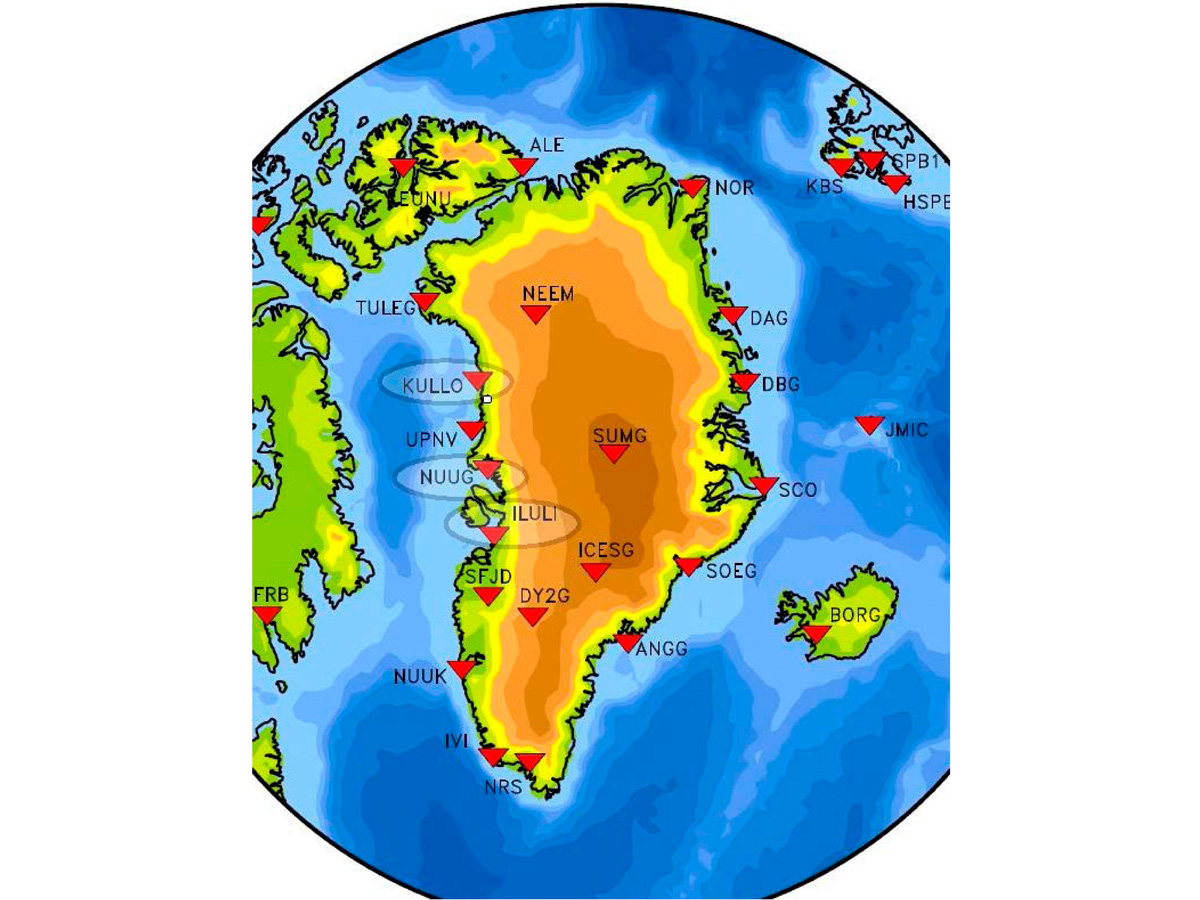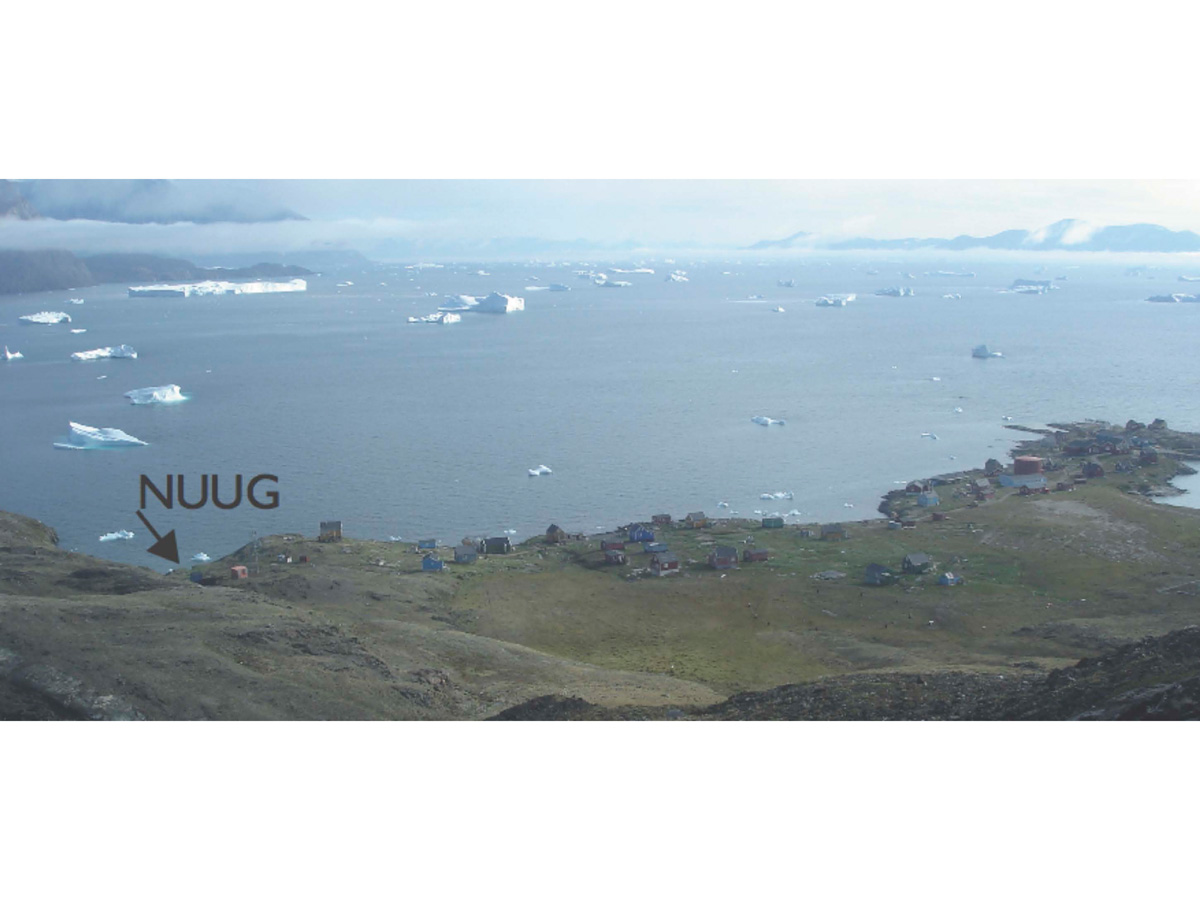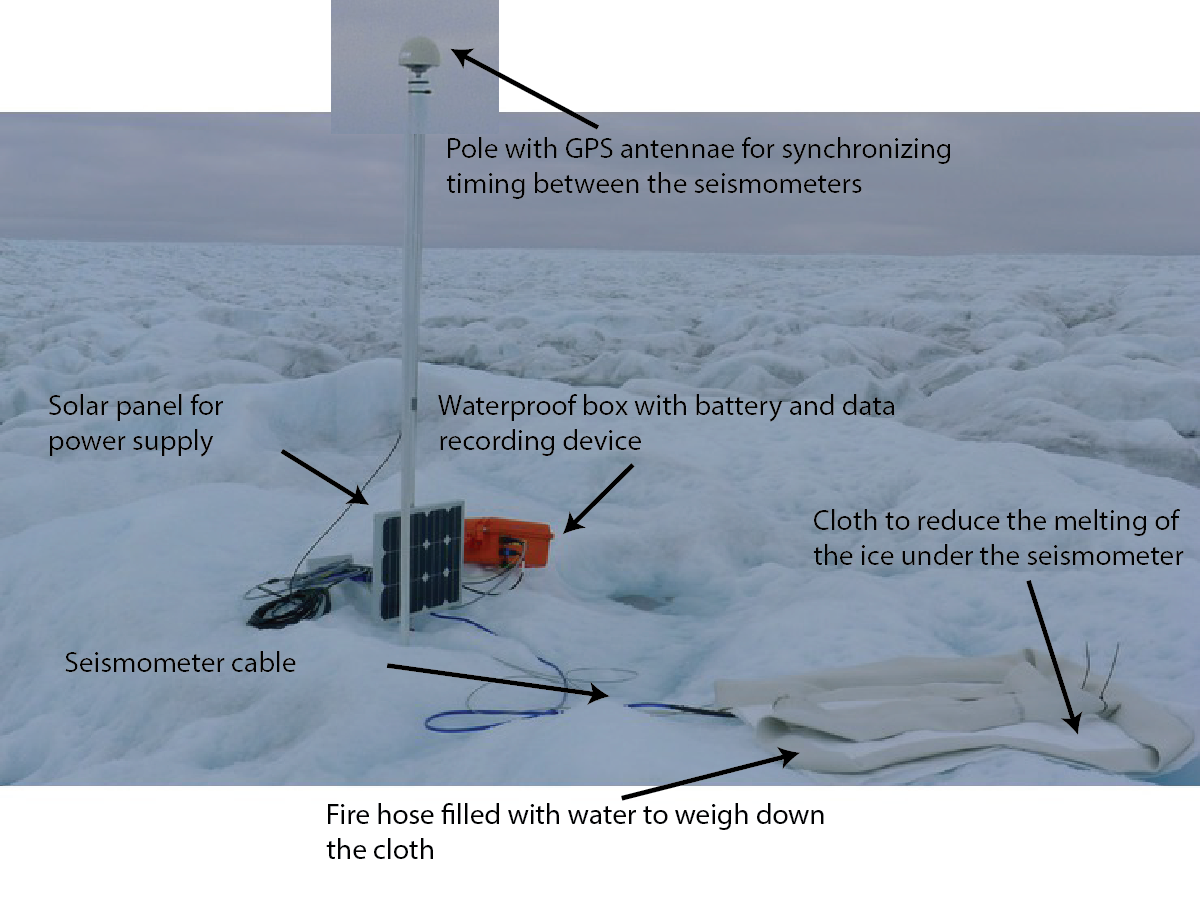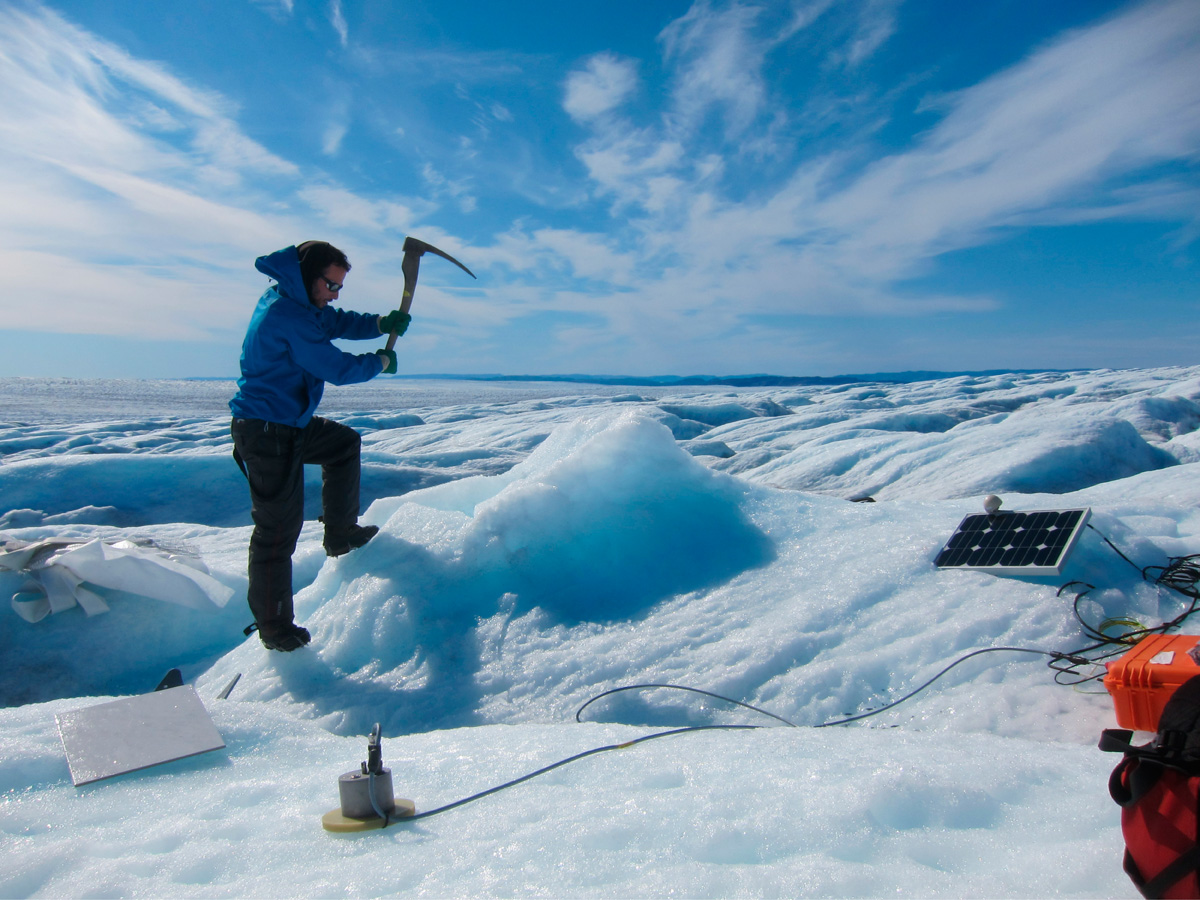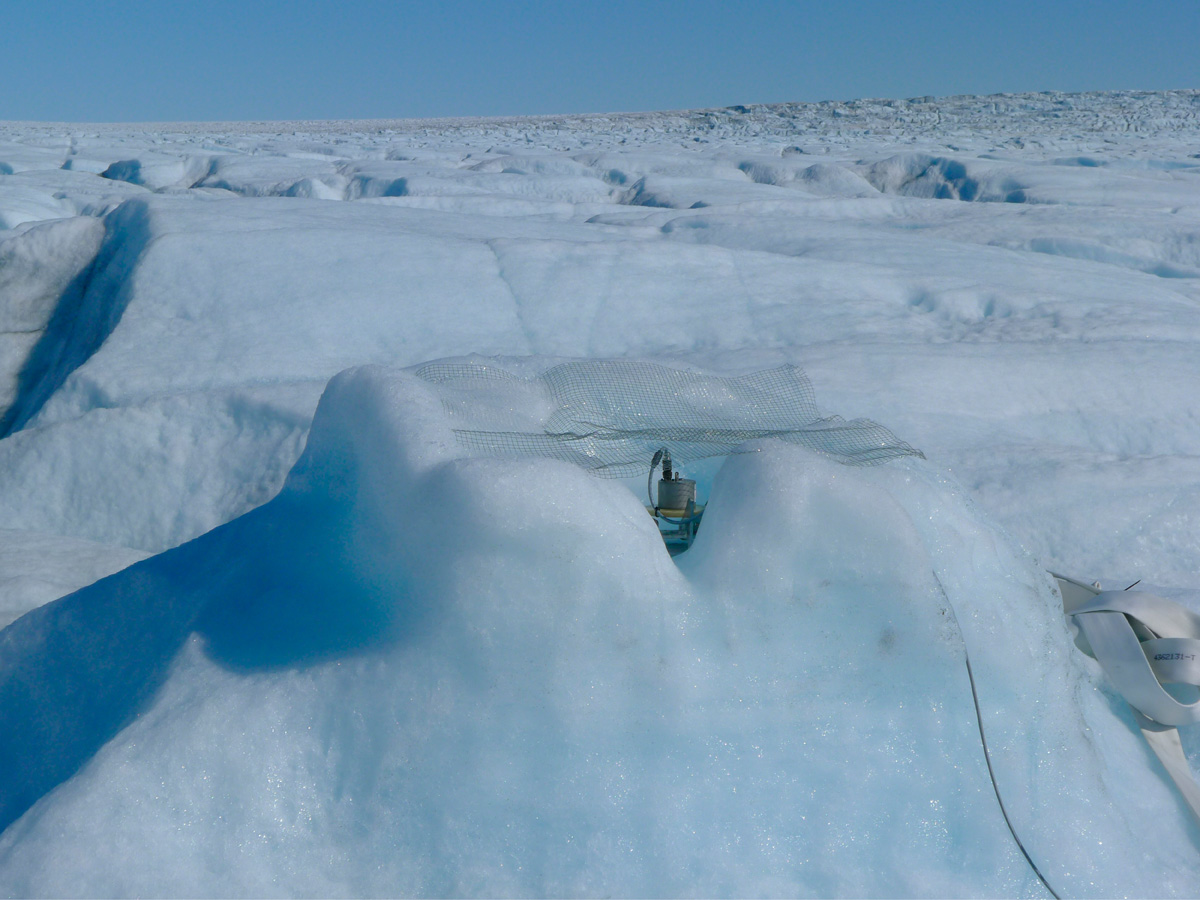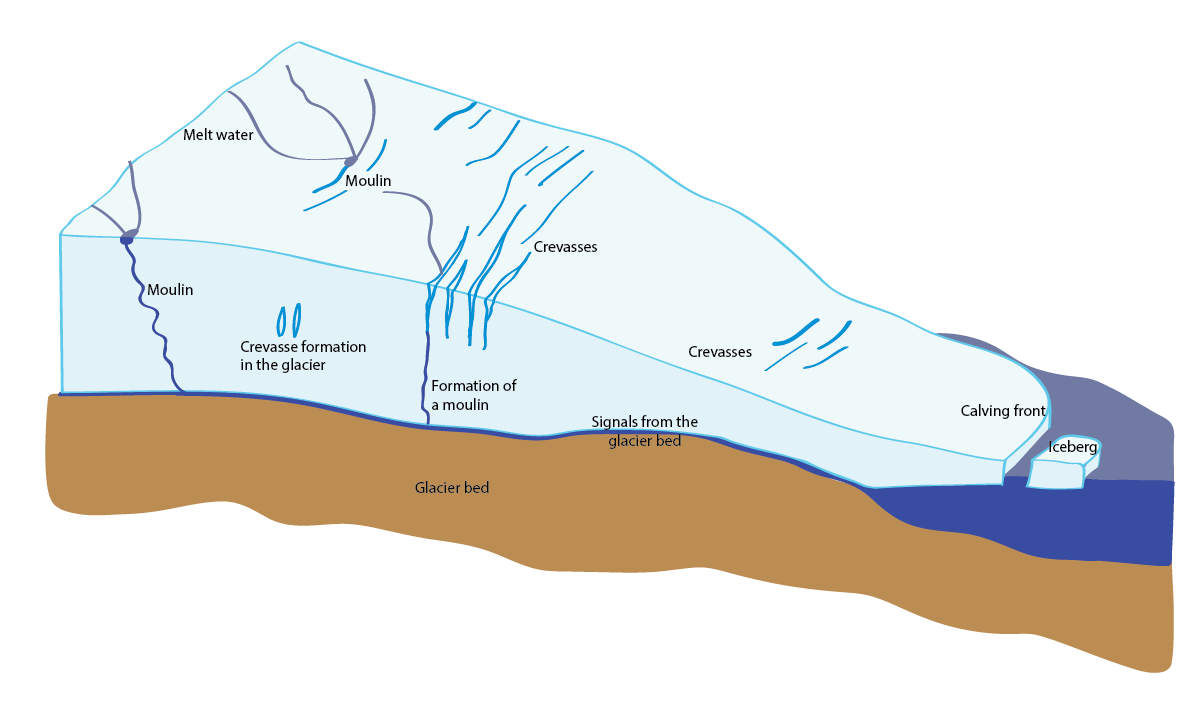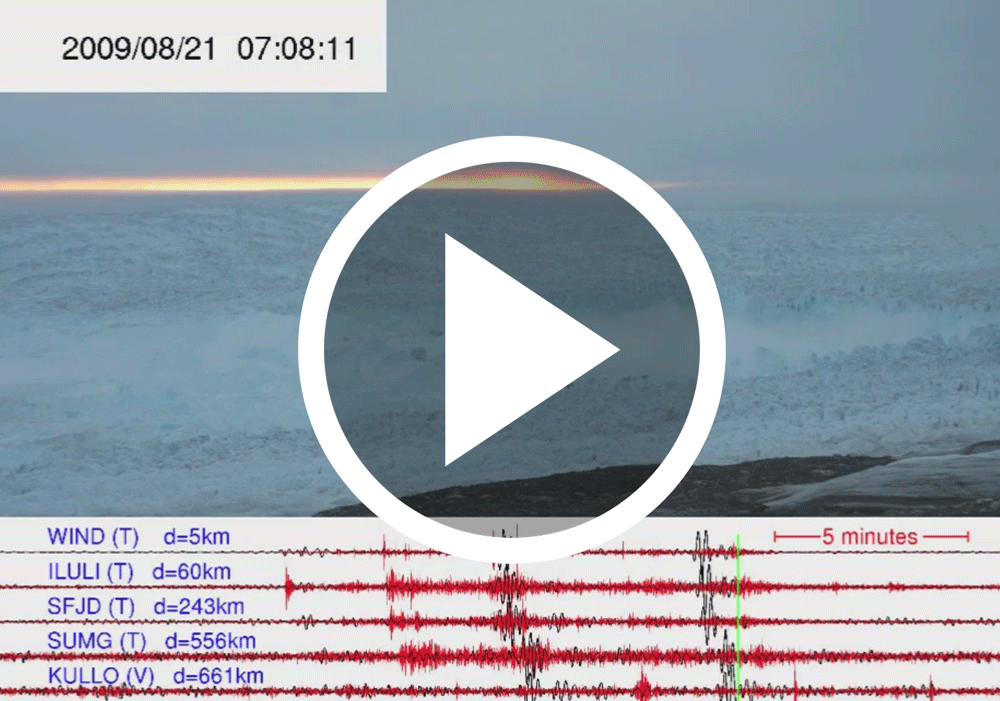Icequakes
Research into glaciers has a long tradition at the Swiss Seismological Service (SED). Currently, the SED is collaborating closely with glaciologists at ETH Zurich (Laboratory of Hydraulics, Hydrology and Glaciology, VAW) in several scientific projects in both Switzerland and abroad. The focus here is on the Rhône Glacier and the Greenland ice sheet: together with observations from classic glaciology, it is hoped that seismic measurements will shed light on the motion of the ice, thanks to seismometers placed temporarily on the glaciers. In Greenland, the SED was involved in setting up a seismic network with the aim of documenting and monitoring changes in the Greenland ice sheet.
Why Study Glaciers?
Glaciers often play an important role in discussions about climate change. Changes in glaciers can have a significant impact on local weather conditions, and increased melting also influences the sea levels. In Switzerland, forecasts of the future development of glaciers are essential for the future development in areas such as energy supply with hydroelectric power and tourism. With this purpose in mind, attempts are being made to record the processes in and below the glacier ice using seismometers. The aim of the exercise is to obtain an understanding of the interplay between the retreat of the glaciers, higher temperatures, and the volume of melt water.
While they cannot be observed directly, the processes under way inside the glacier can be recorded indirectly with the aid of seismometers. Seismometers on or near the glacier enable scientists to “listen in” on the glacier. In the glacier diagram below, the waveforms of icequakes from the various areas of the glacier can be explored by clicking on the writing. The frequency, location, and form of these icequakes are analyzed in scientific studies, the results of which help to shed light on the inner workings and the development of a glacier. The following processes are responsible for causing icequakes: crevasse formation, water runoff (through “moulins” to the glacier bed), sliding of the glacier along the glacier bed, calving (the breaking off of an iceberg into a lake or into the sea).
Explore the glacier by clicking on the black writing:
Let us imagine that the Seismological Service is a large fishing boat whose primary goal is to fish for earthquakes and icequakes. As the SED also aims to record very weak signals with a view to facilitating more accurate scientific statements, it operates a dense network of highly sensitive seismometers, in a similar way to a fine-mesh fishing net. This has the result that, in addition to the intended main catch, a large bycatch also finds its way into the net.
In our case, the bycatch consists of seismic signals caused by humans. The diagram below provides an overview of various man-made quakes. Their characteristic waveform makes them clearly distinguishable from natural seismic tremors by a practiced eye. In addition to the geophysical phenomena mentioned above, it is important to remember that earthquakes can also be caused by humans. More about this in next month’s snapshot on the topic of man-made earthquakes.
Other events recorded by devices of the SED in addition to icequakes:
Please edit this text.
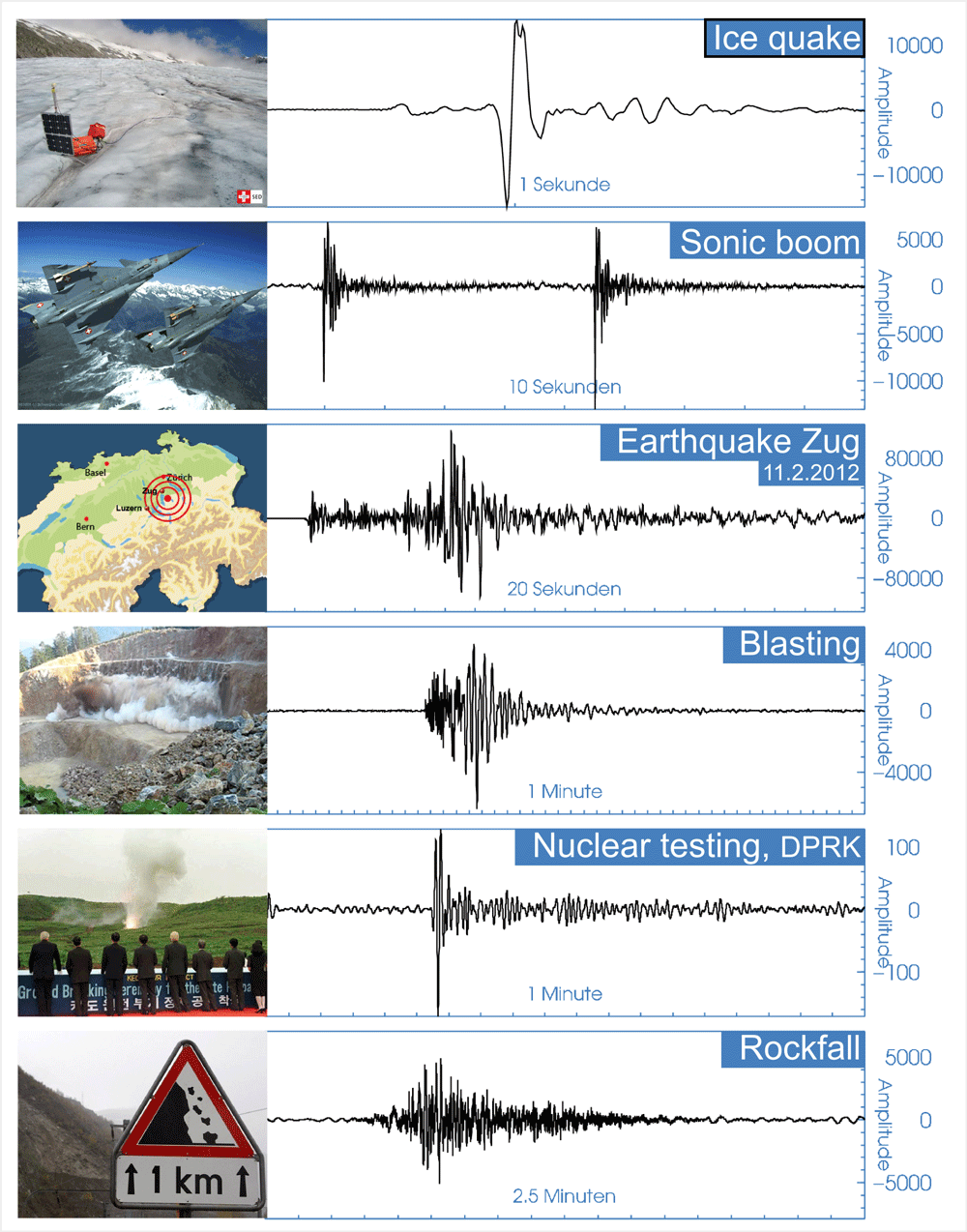
Draining about 7 % of the entire ice sheet, Jakobshavn Isbræ is one of Greenland’s largest outlet glaciers. Near its terminus it flows close to 30 meters per day and has a thickness of approximately 1’000 m. The glacier used to terminate in a floating tongue. However, since the 1990’s the glacier has undergone a > 10 km retreat during which this tongue was lost.
Click on the image to view the movie.
